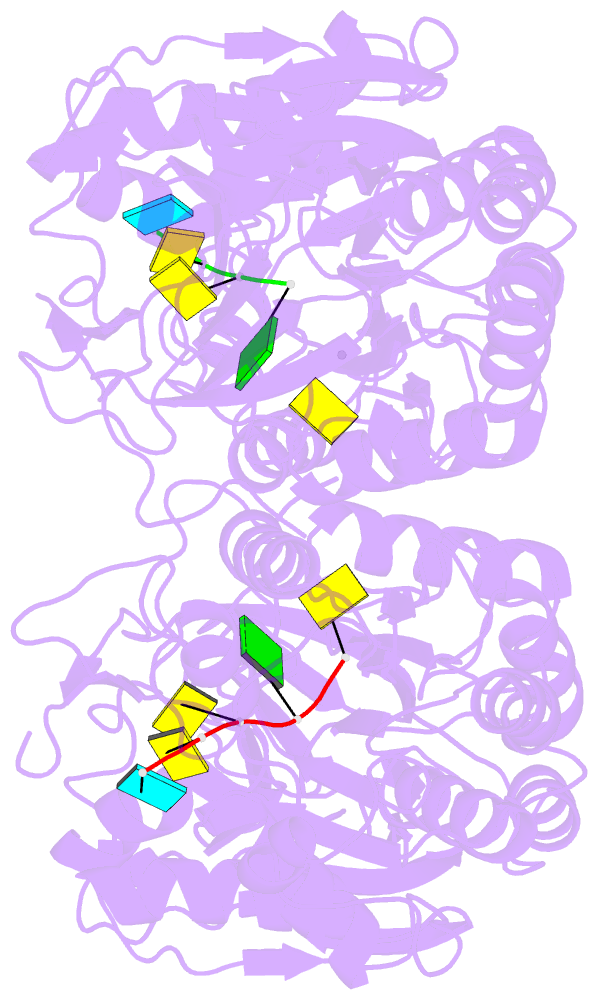Summary information and primary citation
- PDB-id
- 5a0v; DSSR-derived features in text and JSON formats
- Class
- hydrolase-RNA
- Method
- X-ray (2.8 Å)
- Summary
- Catalysis and 5' end sensing by ribonuclease rnase j of the metallo- beta-lactamase family
- Reference
- Pei XY, Bralley P, Jones GH, Luisi BF (2015): "Linkage of Catalysis and 5' End Recognition in Ribonuclease Rnase J." Nucleic Acids Res., 43, 8066. doi: 10.1093/NAR/GKV732.
- Abstract
- In diverse bacterial species, the turnover and processing of many RNAs is mediated by the ribonuclease RNase J, a member of the widely occurring metallo-β-lactamase enzyme family. We present crystal structures of Streptomyces coelicolor RNase J with bound RNA in pre- and post-cleavage states, at 2.27 Å and 2.80 Å resolution, respectively. These structures reveal snapshots of the enzyme cleaving substrate directionally and sequentially from the 5' terminus. In the pre-cleavage state, a water molecule is coordinated to a zinc ion pair in the active site but is imperfectly oriented to launch a nucleophilic attack on the phosphate backbone. A conformational switch is envisaged that enables the in-line positioning of the attacking water and may be facilitated by magnesium ions. Adjacent to the scissile bond, four bases are stacked in a tightly sandwiching pocket, and mutagenesis results indicate that this organization helps to drive processive exo-ribonucleolytic cleavage. Like its numerous homologues, S. coelicolor RNase J can also cleave some RNA internally, and the structural data suggest how the preference for exo- versus endo-cleavage mode is linked with recognition of the chemical status of the substrate's 5' end.





